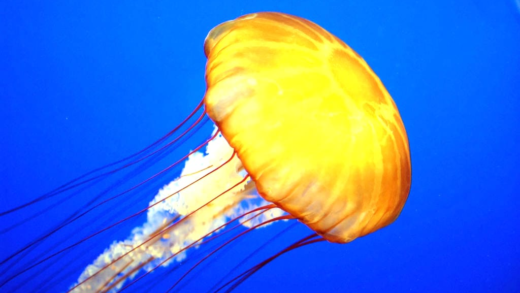Extremophiles are remarkable organisms that thrive in extreme environments like hot springs and icy tundras. They adapt through unique survival mechanisms, such as specialized enzymes and DNA repair systems. Examples include heat-loving thermophiles and salt-loving halophiles. Their study is crucial for understanding life’s limits and has practical applications in biotechnology. Extremophiles also provide insights into the potential for extraterrestrial life, making them significant in astrobiology.
Types of Extremophiles
Extremophiles are fascinating organisms that thrive in extreme environments where most life forms would struggle to survive. There are several types of extremophiles, each uniquely adapted to their harsh habitats. Here’s a breakdown of some main types:
- Thermophiles: These heat-loving microbes can survive in temperatures exceeding 100°C (212°F), often found in hot springs and hydrothermal vents.
- Halophiles: Salt-loving extremophiles thrive in highly saline environments, such as salt flats and salt mines, where they can tolerate salt concentrations much higher than seawater.
- Acidophiles: These organisms flourish in acidic environments, like acid mine drainage sites, where the pH can drop below 3.
- Alkaliphiles: Opposite to acidophiles, alkaliphiles thrive in basic, alkaline conditions, often found in soda lakes.
- Psychrophiles: Cold-loving extremophiles, or psychrophiles, are found in icy habitats, such as polar regions and deep ocean waters, where temperatures are often below freezing.
Understanding these types of extremophiles helps scientists appreciate the diversity of life and the adaptability of organisms. Their resilience serves as a reminder of life’s tenacity in the face of adversity.
Extreme Environments for Extremophiles
Extremophiles are known for their ability to inhabit some of the planet’s most extreme environments. Here are a few of the harsh habitats where these remarkable organisms thrive:
- Boiling Hot Springs: Found in geothermal areas, these springs can reach temperatures of over 100°C (212°F), providing a unique habitat for thermophiles.
- Deep Sea Trenches: These trenches, such as the Mariana Trench, have extreme pressure and low temperatures, making them home to many extremophiles.
- Salt Flats: Highly saline areas like the Great Salt Lake in Utah are ideal for halophiles, which thrive in salt concentrations that would dehydrate most organisms.
- Acidic Lakes: Some lakes have pH levels as low as 1, creating a perfect environment for acidophiles to flourish.
- Antarctic Ice: Psychrophiles can be found in the cold, icy environments of Antarctica, where they adapt to freezing temperatures.
These extreme environments challenge the boundaries of life, showcasing the incredible adaptability of extremophiles. By studying them, we gain insights into the limits of life on Earth and potentially beyond.
Adaptations of Extremophiles
How do extremophiles manage to survive in such harsh conditions? Their adaptations are nothing short of incredible. Here are some key adaptations:
- Heat Shock Proteins: Thermophiles produce special proteins that help maintain their cellular structure at high temperatures.
- Salt Influx Mechanisms: Halophiles have developed mechanisms to balance the osmotic pressure caused by high salt concentrations.
- Cell Membrane Composition: Acidophiles and alkaliphiles modify their cell membranes to stabilize them in extreme pH conditions.
- Antifreeze Proteins: Psychrophiles produce proteins that prevent ice crystal formation, allowing them to survive in freezing temperatures.
These adaptations are crucial for extremophiles, enabling them to thrive where other organisms cannot. By understanding these survival mechanisms, researchers can explore new possibilities in biotechnology and environmental science.
Examples of Extremophiles
There are many fascinating examples of extremophiles that showcase their unique features:
- Thermococcus gammatolerans: A thermophile found in hydrothermal vents, it can withstand extreme temperatures and radiation.
- Halobacterium salinarum: This halophile thrives in high salt environments and is known for its vibrant red color due to carotenoid pigments.
- Ferroplasma acidarmanus: An acidophile that lives in acidic hot springs and has a unique ability to oxidize iron.
- Psychrobacter cryohalolentis: A psychrophile that can grow at freezing temperatures and is found in Arctic and Antarctic regions.
These examples illustrate the remarkable diversity and adaptability of extremophiles. Their unique features not only intrigue scientists but also offer potential applications in various fields.
Importance of Extremophiles in Research
Extremophiles play a crucial role in scientific research. These remarkable organisms provide insights into the limits of life on Earth and beyond. By studying extremophiles, researchers learn how life can adapt to extreme conditions, which can inform our understanding of biological processes. Here are some key points about their significance:
- Biochemical Insights: Extremophiles produce unique enzymes and proteins that function optimally under extreme conditions, which can be invaluable in industrial applications.
- Evolutionary Studies: They serve as models for studying evolutionary biology, helping scientists understand how life evolved and adapted to different environments.
- Astrobiology: Understanding extremophiles can guide the search for life on other planets, as these organisms exemplify potential life forms that could exist in extreme extraterrestrial environments.
Overall, extremophiles enhance our understanding of biological resilience and adaptability, making them essential for various scientific fields.
Extremophiles and Extraterrestrial Life
Could extremophiles hold the key to finding life beyond Earth? Their unique characteristics provide important clues for astrobiology. By studying how these organisms survive in extreme conditions, scientists gain insights into the potential for life on other planets. Here are some aspects to consider:
- Analogous Environments: The extreme environments on Earth, where extremophiles thrive, are similar to conditions found on other planets and moons, such as Mars and Europa.
- Indicators of Life: The resilience of extremophiles suggests that life could exist in harsh environments, encouraging scientists to search for biosignatures on other celestial bodies.
- Future Missions: Research on extremophiles informs the design of future space missions aimed at exploring extreme environments beyond Earth.
In essence, extremophiles not only expand our understanding of life on Earth but also shape our exploration of the cosmos.
Practical Applications of Extremophiles in Biotechnology
Extremophiles are not just fascinating; they have real-world applications in biotechnology. Their unique properties make them valuable in various industries. Here are some practical applications:
- Enzyme Production: Extremophiles produce enzymes that can withstand extreme temperatures and pH levels, making them useful in industrial processes, such as biofuels and detergents.
- Bioremediation: Some extremophiles can break down pollutants in harsh environments, aiding in environmental cleanup efforts.
- Food Technology: They are used in food preservation and fermentation processes, enhancing flavor and shelf-life.
The diverse applications of extremophiles highlight their significance in advancing technology and addressing global challenges.
Survival Mechanisms of Extremophiles
Extremophiles are masters of survival, employing unique strategies that allow them to thrive in conditions that would be lethal for most organisms. These survival mechanisms are essential for their existence in extreme environments. Here are some key strategies:
- Enzyme Adaptation: Extremophiles produce enzymes that function optimally at extreme temperatures, acidity, or salinity. These enzymes are often more stable than their counterparts from regular organisms.
- DNA Repair Mechanisms: Many extremophiles have advanced DNA repair systems that protect their genetic material from damage caused by extreme conditions, such as radiation or heat.
- Protective Molecules: Some extremophiles synthesize special molecules, like trehalose, which protect their cells from desiccation and help maintain cellular integrity under stress.
- Metabolic Flexibility: Extremophiles often have flexible metabolic pathways, allowing them to utilize a variety of energy sources, which is vital in environments where resources are scarce.
These mechanisms not only highlight the incredible adaptability of extremophiles but also inspire biotechnological innovations. Understanding how these organisms thrive can lead to advancements in medicine, industry, and environmental science.
Fascinating Extremophiles in Action
Real-life examples of extremophiles demonstrate their astonishing resilience. Here are some captivating stories of extremophiles in their natural habitats:
- Thermophiles in Hydrothermal Vents: At the bottom of the ocean, thermophiles like Thermococcus gammatolerans flourish in superheated waters near hydrothermal vents, where they play a crucial role in the ecosystem by recycling nutrients.
- Halophiles in Salt Flats: Halobacterium salinarum thrives in salt flats, forming vibrant pink blooms visible from afar. These organisms not only survive but actively contribute to the ecosystem by metabolizing salt and creating a unique habitat.
- Psychrophiles in Antarctica: In the freezing waters of Antarctica, Psychrobacter cryohalolentis showcases its ability to grow and reproduce at temperatures below freezing, demonstrating life’s persistence in extreme cold.
- Acidophiles in Acidic Lakes: The Ferroplasma acidarmanus can be found in acidic hot springs, where it oxidizes iron to survive. This unique adaptation allows it to thrive in conditions that would destroy most other forms of life.
These examples illustrate not just the survival of extremophiles, but their active roles in their environments. They are not merely surviving; they are thriving, contributing to the ecosystems they inhabit and showcasing the incredible diversity of life on Earth.





Comments are closed.